Showing all 7 results
-
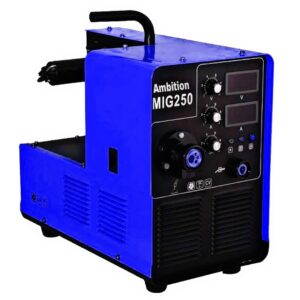 Read more
Read moreMIG welding , is an abbreviation for “Metal Inert Gas” which is more
formally known as “Gas Metal Arc Welding” or “GMAW”. The term MIG comes from
the original shielding gasses used that were the inert, or Nobel, gasses. Today
the gases used vary, so the name has officially been changed to “Gas Metal Arc
Welding”. MIG welding is the slang term that is commonly accepted. It is also
known as “Wire Wheel Welding”. This process uses a wire feed to feed solid
filler wire to the weld joint.MIG welding is an excellent choice for all types of metals, and with the
benefits of a single pass there is little need for any additional shielding
gas. As the weld shrinks, the gasses escape from the joint, leaving it fully
protected from oxidation and moisture. Using just one gas instead of both argon
and helium also saves you money in gas costs and limits the risk of leaks when
transporting or storing your equipment as there are no other gases needed to
store compared to arc welders and they reduce corrosion with no other gases
required. -
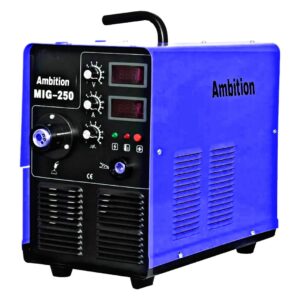 Read more
Read moreMIG welding , is an abbreviation for “Metal Inert Gas” which is more
formally known as “Gas Metal Arc Welding” or “GMAW”. The term MIG comes from
the original shielding gasses used that were the inert, or Nobel, gasses. Today
the gases used vary, so the name has officially been changed to “Gas Metal Arc
Welding”. MIG welding is the slang term that is commonly accepted. It is also
known as “Wire Wheel Welding”. This process uses a wire feed to feed solid
filler wire to the weld joint.MIG welding is an excellent choice for all types of metals, and with the
benefits of a single pass there is little need for any additional shielding
gas. As the weld shrinks, the gasses escape from the joint, leaving it fully
protected from oxidation and moisture. Using just one gas instead of both argon
and helium also saves you money in gas costs and limits the risk of leaks when
transporting or storing your equipment as there are no other gases needed to
store compared to arc welders and they reduce corrosion with no other gases
required. -
 Read more
Read moreMIG welding , is an abbreviation for “Metal Inert Gas” which is more
formally known as “Gas Metal Arc Welding” or “GMAW”. The term MIG comes from
the original shielding gasses used that were the inert, or Nobel, gasses. Today
the gases used vary, so the name has officially been changed to “Gas Metal Arc
Welding”. MIG welding is the slang term that is commonly accepted. It is also
known as “Wire Wheel Welding”. This process uses a wire feed to feed solid
filler wire to the weld joint.MIG welding is an excellent choice for all types of metals, and with the
benefits of a single pass there is little need for any additional shielding
gas. As the weld shrinks, the gasses escape from the joint, leaving it fully
protected from oxidation and moisture. Using just one gas instead of both argon
and helium also saves you money in gas costs and limits the risk of leaks when
transporting or storing your equipment as there are no other gases needed to
store compared to arc welders and they reduce corrosion with no other gases
required. -
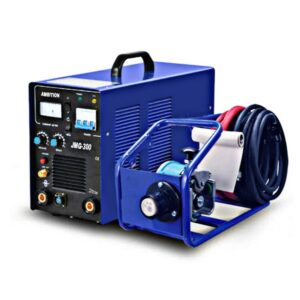 Read more
Read moreMIG welding , is an abbreviation for “Metal Inert Gas” which is more
formally known as “Gas Metal Arc Welding” or “GMAW”. The term MIG comes from
the original shielding gasses used that were the inert, or Nobel, gasses. Today
the gases used vary, so the name has officially been changed to “Gas Metal Arc
Welding”. MIG welding is the slang term that is commonly accepted. It is also
known as “Wire Wheel Welding”. This process uses a wire feed to feed solid
filler wire to the weld joint.MIG welding is an excellent choice for all types of metals, and with the
benefits of a single pass there is little need for any additional shielding
gas. As the weld shrinks, the gasses escape from the joint, leaving it fully
protected from oxidation and moisture. Using just one gas instead of both argon
and helium also saves you money in gas costs and limits the risk of leaks when
transporting or storing your equipment as there are no other gases needed to
store compared to arc welders and they reduce corrosion with no other gases
required. -
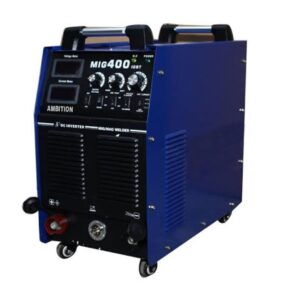 Read more
Read moreMIG welding , is an abbreviation for “Metal Inert Gas” which is more
formally known as “Gas Metal Arc Welding” or “GMAW”. The term MIG comes from
the original shielding gasses used that were the inert, or Nobel, gasses. Today
the gases used vary, so the name has officially been changed to “Gas Metal Arc
Welding”. MIG welding is the slang term that is commonly accepted. It is also
known as “Wire Wheel Welding”. This process uses a wire feed to feed solid
filler wire to the weld joint.MIG welding is an excellent choice for all types of metals, and with the
benefits of a single pass there is little need for any additional shielding
gas. As the weld shrinks, the gasses escape from the joint, leaving it fully
protected from oxidation and moisture. Using just one gas instead of both argon
and helium also saves you money in gas costs and limits the risk of leaks when
transporting or storing your equipment as there are no other gases needed to
store compared to arc welders and they reduce corrosion with no other gases
required. -
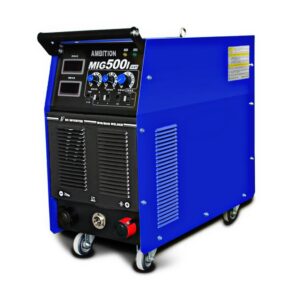 Read more
Read moreMIG welding , is an abbreviation for “Metal Inert Gas” which is more
formally known as “Gas Metal Arc Welding” or “GMAW”. The term MIG comes from
the original shielding gasses used that were the inert, or Nobel, gasses. Today
the gases used vary, so the name has officially been changed to “Gas Metal Arc
Welding”. MIG welding is the slang term that is commonly accepted. It is also
known as “Wire Wheel Welding”. This process uses a wire feed to feed solid
filler wire to the weld joint.MIG welding is an excellent choice for all types of metals, and with the
benefits of a single pass there is little need for any additional shielding
gas. As the weld shrinks, the gasses escape from the joint, leaving it fully
protected from oxidation and moisture. Using just one gas instead of both argon
and helium also saves you money in gas costs and limits the risk of leaks when
transporting or storing your equipment as there are no other gases needed to
store compared to arc welders and they reduce corrosion with no other gases
required. -
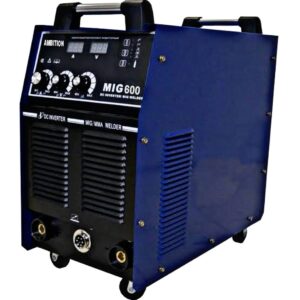 Read more
Read moreMIG welding , is an abbreviation for “Metal Inert Gas” which is more
formally known as “Gas Metal Arc Welding” or “GMAW”. The term MIG comes from
the original shielding gasses used that were the inert, or Nobel, gasses. Today
the gases used vary, so the name has officially been changed to “Gas Metal Arc
Welding”. MIG welding is the slang term that is commonly accepted. It is also
known as “Wire Wheel Welding”. This process uses a wire feed to feed solid
filler wire to the weld joint.MIG welding is an excellent choice for all types of metals, and with the
benefits of a single pass there is little need for any additional shielding
gas. As the weld shrinks, the gasses escape from the joint, leaving it fully
protected from oxidation and moisture. Using just one gas instead of both argon
and helium also saves you money in gas costs and limits the risk of leaks when
transporting or storing your equipment as there are no other gases needed to
store compared to arc welders and they reduce corrosion with no other gases
required.
